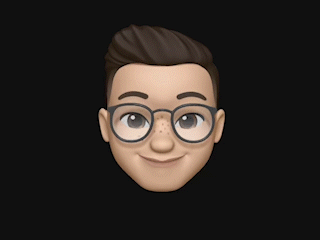You know what’s funny? Everyone talks about scaling design teams like bigger automatically means better. Meanwhile, I’ve spent years working with compact design teams that absolutely crush it compared to those massive, process-heavy departments.
After reading Slack’s approach to design operations with smaller teams, it confirmed what I’ve experienced firsthand: sometimes less really is more. But here’s the kicker – throw AI into the mix, and small teams become unstoppable.
The Small Team Advantage Nobody Talks About
Here’s the thing about working with 3-5 designers versus 20-30: communication happens at the speed of thought. When you’re sitting next to your teammates (or in the same Slack channel), decisions get made in minutes, not meetings.
I’ve watched small teams ship features in weeks that would take enterprise design departments months to approve. Why? Because we skip the bureaucracy and focus on the work that actually matters.
The magic happens when everyone wears multiple hats. Your UI designer also thinks about research. Your researcher understands visual design principles. Your design systems person can jump into user testing. This overlap creates a shared understanding that’s impossible to achieve with siloed specialists.
How Slack’s Small Team Approach Actually Works
Slack’s design operations team figured out something crucial: you don’t need a massive team to have massive impact. Instead of hiring more people, they focused on making their existing team more effective.
Their approach centers around three key areas that I’ve seen work brilliantly in practice:
Streamlined decision-making processes. When fewer people are involved in decisions, those decisions happen faster and with less confusion. Everyone understands the reasoning because everyone was part of the conversation.
Flexible role definitions. Team members contribute beyond their job titles. Creating natural knowledge sharing, this approach prevents bottlenecks when someone’s out of office or swamped with work.
Tool consolidation and automation. Rather than managing dozens of different platforms, small teams pick a core set of tools and use them extremely well. Reducing context switching, this strategy keeps everyone aligned.
The Speed Factor That Changes Everything
Working with smaller design teams means you operate at startup velocity, even inside larger organizations. Here’s what that actually looks like:
Design reviews happen over coffee, not in conference rooms. Quick feedback loops mean iterations happen in real-time. You spot problems early and fix them before they become expensive mistakes.
Documentation stays lightweight and useful. Instead of comprehensive design specs that nobody reads, you create just enough documentation to keep everyone aligned. The team’s collective memory fills in the gaps.
Experimentation becomes the default. With fewer stakeholders to convince, you can test ideas quickly and learn from real user feedback instead of endless internal debates.
I’ve seen small teams prototype, test, and ship new features while their enterprise counterparts were still scheduling kickoff meetings. That speed advantage compounds over time into serious competitive differentiation.
Where AI Becomes Your Secret Weapon
Now here’s where things get interesting. Small teams already move fast, but AI tools make them move at light speed while maintaining quality that rivals much larger departments.
Design exploration happens in minutes, not hours. Tools like Figma’s AI features, Midjourney for concept exploration, and ChatGPT for content strategy mean one designer can explore dozens of directions in the time it used to take for one or two.
Research synthesis becomes instant. AI can analyze user interviews, synthesize survey data, and identify patterns faster than a human researcher. Your small team suddenly has enterprise-level research capabilities without the enterprise-level budget.
Documentation writes itself. AI tools can generate design system documentation, create component descriptions, and even write user stories based on your designs. The administrative overhead that usually bogs down small teams just disappears.
But here’s what’s really wild: AI doesn’t replace the human creativity and strategic thinking that makes small teams special. Instead, it amplifies those strengths while handling the repetitive tasks that used to slow everyone down.
Building Systems That Scale Without Bureaucracy
The trick to making small design teams work long-term is building systems that grow with you without becoming burdensome. Slack figured this out by focusing on flexible processes rather than rigid procedures.
Start with principles, not rules. When your team understands the reasoning behind decisions, they can apply that logic to new situations without needing explicit instructions for every scenario.
Document decisions, not just deliverables. Capture why you chose one approach over another. Providing context, this documentation helps future team members (including future you) understand the thinking behind your work.
Automate the boring stuff relentlessly. Use tools like Zapier to connect your design workflow. Set up templates for common deliverables. Create shortcuts for repetitive tasks. The more you automate, the more time you have for actual design thinking.
The Collaboration Patterns That Actually Work
Small teams succeed when everyone understands how their work connects to business outcomes. Rather than thinking beyond pixels, this means designers consider the entire user journey.
Weekly design critiques become strategic sessions. Instead of just reviewing visual designs, discuss how your work supports business objectives. Maintaining alignment, this approach keeps everyone focused on what matters most.
Cross-functional partnerships happen naturally. When your team is small, you end up working closely with engineers, product managers, and marketers. These relationships become your biggest advantage for shipping great products.
User feedback loops stay tight. Small teams can incorporate user research findings immediately because there’s less organizational inertia to overcome. You learn something on Monday and ship improvements by Friday.
When Small Teams Hit Their Limits (And How to Handle It)
Let’s be honest: small design teams aren’t perfect for every situation. There are legitimate challenges you need to address proactively.
When you only have one person who understands your design system, specialization becomes a bottleneck. That person becomes a single point of failure. The solution? Cross-training and documentation that actually helps people learn.
Small teams often support multiple product areas or business units, making stakeholder management overwhelming. Managing all those relationships and competing priorities requires clear communication and firm boundaries.
Moving fast with limited resources makes it easy to skip steps that seem optional but actually matter. Quality can suffer under pressure. Build quality checkpoints into your process that can’t be skipped, even when deadlines are tight.
The Future Belongs to Efficient Teams
Here’s what I’ve learned after years of working with design teams of all sizes: the future belongs to teams that can move quickly without sacrificing quality. That usually means smaller, more focused groups supported by excellent tools and clear processes.
AI is making this even more true. A three-person design team with great AI tools can now accomplish what used to require ten people. They can research faster, iterate more quickly, and maintain higher quality standards because the technology handles the grunt work.
The companies that figure this out first will have a massive advantage. While their competitors are still trying to coordinate 20-person design teams, they’ll be shipping better products faster with a fraction of the overhead.
But here’s the most important part: none of this works without the right people and culture. Small teams require designers who are comfortable with ambiguity, excited about wearing multiple hats, and committed to continuous learning.
Making It Work in Practice
Ready to build or optimize your own small design team? Start with these practical steps:
Hire for adaptability over specialization. Look for designers who can contribute across multiple areas rather than deep specialists in narrow fields. T-shaped skills beat I-shaped skills every time.
Invest in the right tools from day one. Don’t try to save money on software that makes your team more effective. Good tools pay for themselves quickly through improved efficiency and output quality.
Establish clear communication rhythms. Daily standups, weekly design reviews, and monthly retrospectives keep everyone aligned without creating meeting overload.
Build relationships with your engineering team early. The closer you work with engineers, the faster you can move from design to implementation. Becoming your biggest competitive advantage, this partnership offers valuable insights. GitHub’s design and engineering collaboration practices provide excellent examples of making this work effectively.
The bottom line? Small design teams aren’t just a budget-friendly alternative to large departments. When done right, they’re actually superior for most situations. Add AI tools to the mix, and you’ve got a combination that’s tough to beat.






